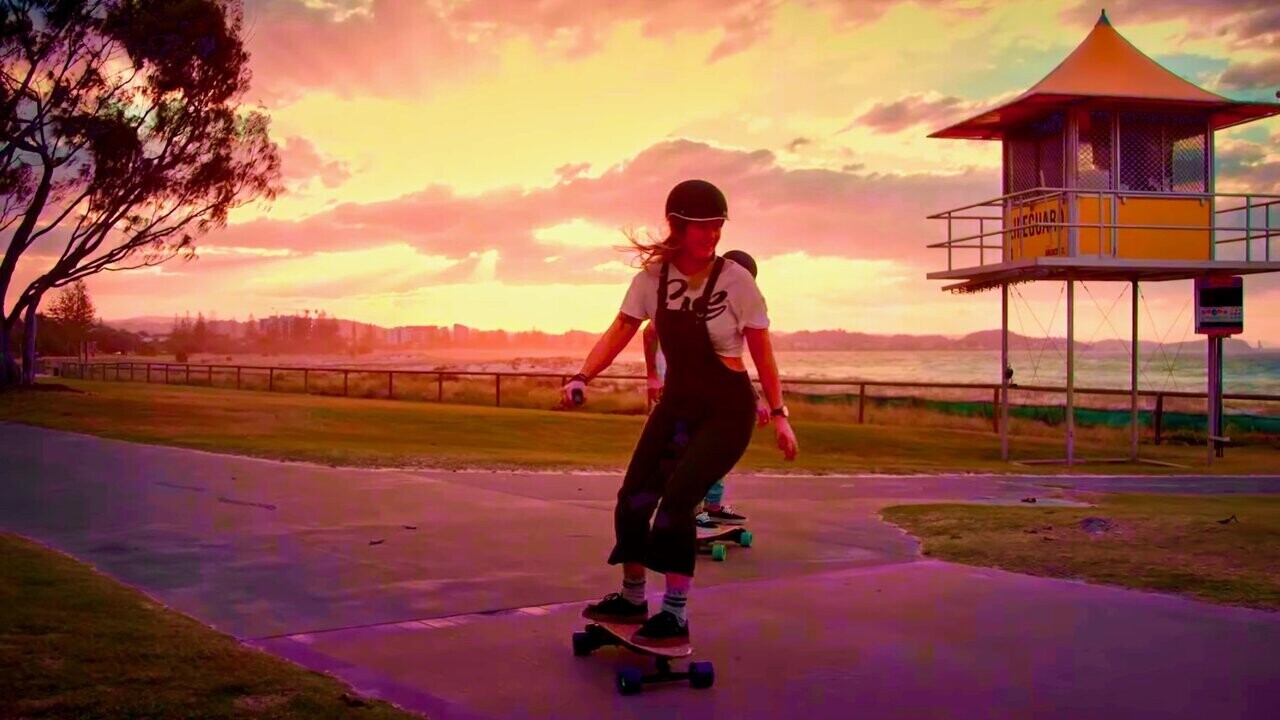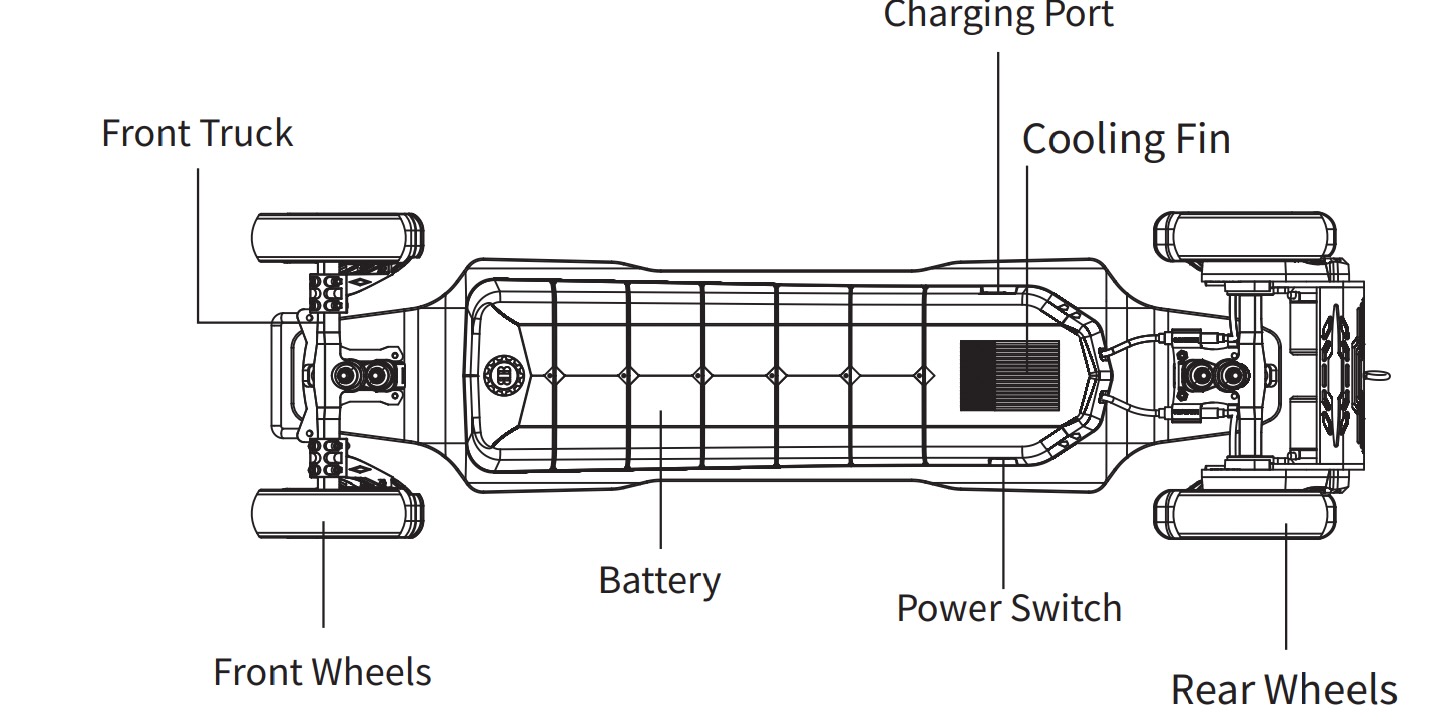
As people look for greener ways to travel, the mobility industry is evolving — and one of the success stories in recent times is electric skateboarding. Or eskateboarding, as the kids say.
Don’t know your truck from your deck? Well, this guide will get you started. In fact, much of the information comes from eskaters themselves, who kindly shared their knowledge with me.
What is an electric skateboard and how do they work?

Electric skateboards, also known as eboards and often written as esk8 [god, I feel old] are powered by an electric motor and typically controlled using a wireless hand-held remote controller that communicates via Bluetooth between the controller and the board.
There are also corresponding apps to track metrics such as distance traveled and battery life.

The remote control functionality removes the need to kick-push or use your foot on the ground to break. Instead, these boards use motion and weight sensors for acceleration and braking, and shifts in body weight to adjust the board’s speed.

What’s the speed and range like?
The first mainstream boards by Boosted Boards offered a 9.6km (6 mile) range at 32km (20 miles) per hour.
By comparison, today’s eskateboards typically offer a top speed of around 55 kmph (34 mph) with a range of anything between 20km and about 70km (44 miles). Some skaters will hack their boards to make them go faster.

Jed, a keen eskater and active community member in bringing people into the scene, shared this with me about the traveling on the electric boards::
Advertised range is a liar’s game. Technically those ranges are achievable, but you should always compare Esk8 range by battery size. These aren’t cars where Aero is determined by the size and shape of the car and weight determined by the 1,500lb battery below the floorboard.
The rider’s size/weight, road conditions, and speed matter far more than if the motors are 88% or 90% mechanically efficient. So if board A claims 12 miles with a 216Wh battery and board B claims 27km (17 miles) with a 216Wh battery, board B is lying*.
Rule of thumb is ~15Wh/mi at 24 kmpm (15mph) with skate wheels. Riding faster than 4lkmph (25mph) can make that jump to over 25wh/mi.
Lots of current boards have haptics in the remote to vibrate when it turns on and off, or to warm of low voltage in the remote battery.
Charging a skateboard generally takes about 2 or 3 hours.
How the hell do I stop?
Unlike normal skateboarding you don’t need to put your foot down to cease moving. Instead, there are two kinds of braking – dynamic and regenerative:
- Dynamic braking converts the electrical (kinetic) energy into heat by transferring the electricity of the spinning motors into a resistor which creates resistance onto the copper wires. This resistance slows the motor’s spinning and stops the board.
- With regenerative braking when you press the remote control to stop the electric motor goes into reverse mode, reducing the speed of the board’s wheels. The motor functions as an electric generator as the rotor spins backward, producing electricity that is fed back into the battery thereby recharging it.
However, the downside to the regenerative model is that because the brakes recharge the battery, a large hill can overcharge it. This can cause the device to turn off the braking function.
A few skateboards come with both regenerative and dynamic brakes installed in the same unit.
Confused? Here’s a great explainer of the science of braking in more detail.
Are electric skateboards legal? Where can I ride them?

- Where can it be used?
- Who can use it?
- Who decides?
Goverment representatives make many local decisions without involving the communities for which the laws represent — eskaters themselves.
There are no specific laws that either allow or limit eskateboard riding in many countries, which makes things confusing.
However, this doesn’t give you free reign as to whether you can ride on the sidewalk, in a bicycle lane, on the road or in public spaces like city squares and shopping center forecourts.
Laws are confusing and complex
Laws also relate to the speed of the eskateboard. For example, in France, you can ride skateboards on city roads where the speed limit is less or equal to 50kph, but not on roads in the countryside.
It’s legal to ride on bike paths and even on the sidewalk at a reduced speed (6kmph) in some French cities, but it depends on the local laws! However, the electric skateboard’s maximum speed should not exceed 25kmph (15mph), which is far slower than most electric skateboards.
Helpful resources

- E8 news forums
- /r/ElectricSkateboarding/
- ESK8 USA (Facebook group)
- MBoards (For DIY board building)
- Ronnie Sarmiento
- Daniel Kwan
- Fat Daddy has a great list that is accurate as of June 2020 and it’s always advisable to check with your local municipality for the most current regulations.
Piqued your interest in giving eskateboarding a try? Stay turned for more stories.
I’ll publish a corresponding article sharing the insights of all the awesome eskaters I interviewed in greater detail very soon.
I’ll also be following this article up with an interview with the organizers of a community-led campaign to change the laws – watch this space.
Get the TNW newsletter
Get the most important tech news in your inbox each week.




